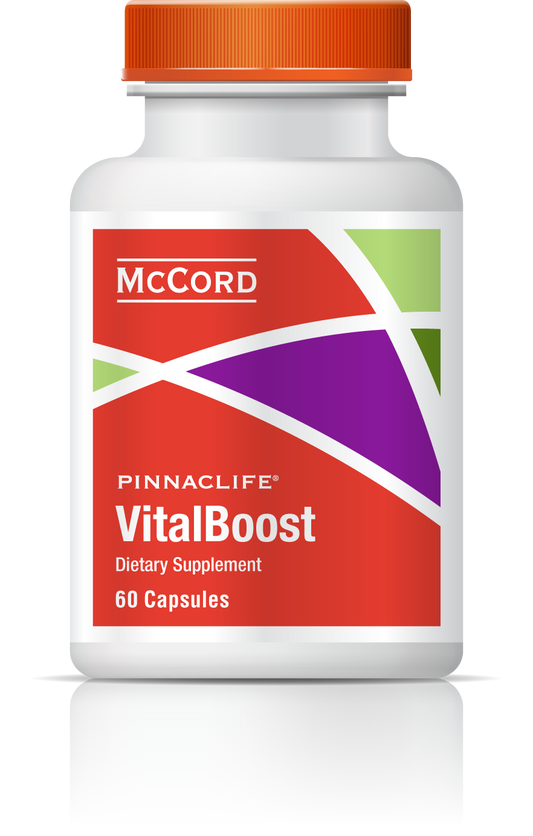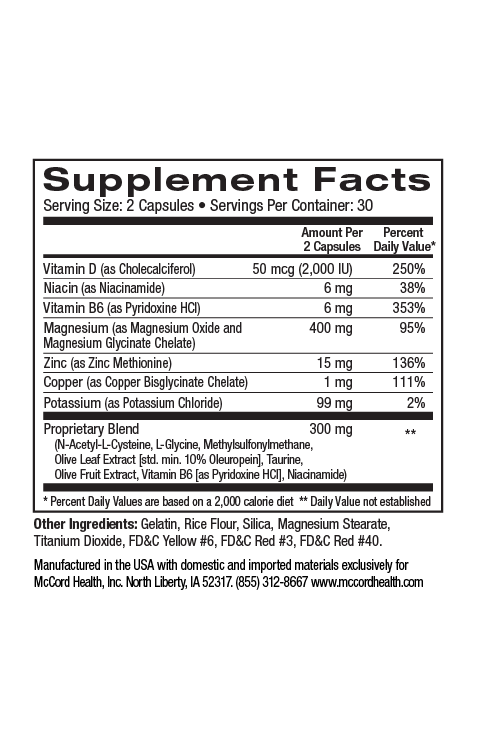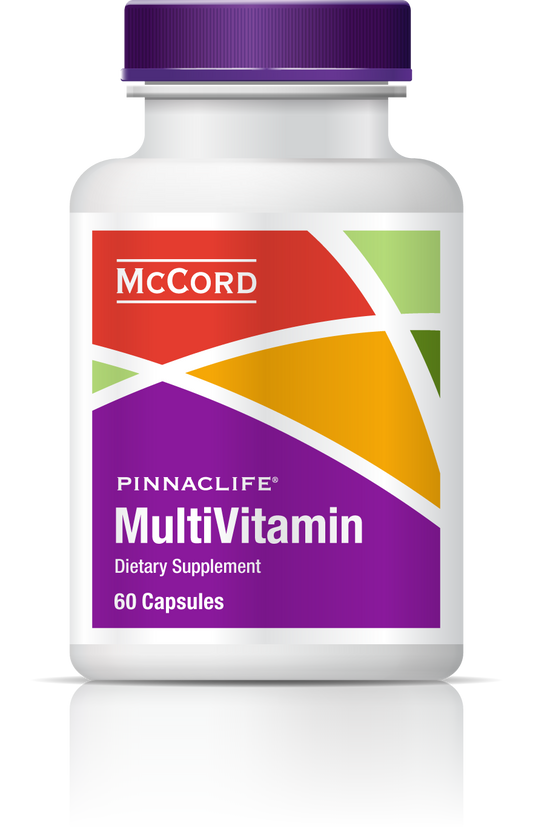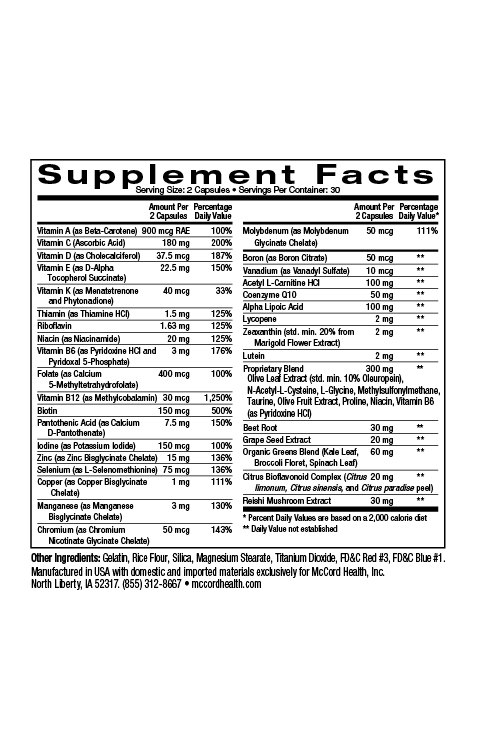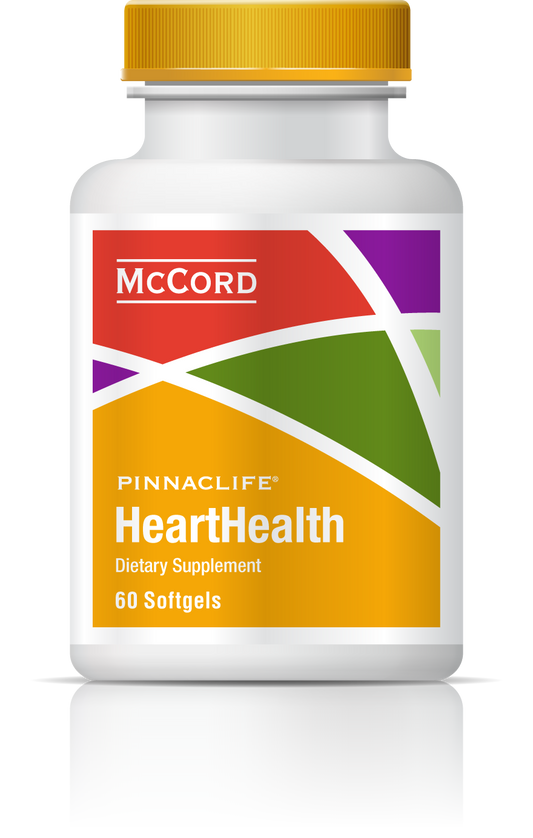The normal neuronal-vascular relationship is vital to healthy brain functioning. Cognitive decline and neurodegenerative diseases can result from endothelial dysfunction, oxidative stress, and inflammation. The olive polyphenols, hydroxytyrosol and oleuropein have potent activities that counteract oxidative stress and inflammation, and hydroxytyrosol has been shown to decrease endothelial dysfunction. The olive polyphenols, hydroxytyrosol and oleuropein along with other beneficial small molecules in Proprietary Blend found in Pinnaclife® BrainHealth are capable of crossing the blood brain barrier (BBB) to promote brain health. Damage to mitochondria that produce energy for brain cells is also associated with neurodegenerative diseases including Alzheimer’s and Parkinson’s disease. Oleuropein and hydroxytyrosol activate the major antioxidant defense enzyme, manganese superoxide (MnSOD) that can protect mitochondria from age-associated damage.
- Healthy blood vessels and endothelial cell functioning are critical for brain health
- Endothelial dysfunction can contribute to cognitive decline and neurodegeneration
- Studies have shown that the olive polyphenol hydroxytyrosol can decrease endothelial dysfunction
- Small beneficial molecules like those found in Proprietary Blend including hydroxytyrosol can cross the BBB and promote brain health
- Active brain cells rely on energy produced by mitochondria and damaged or dysfunctional mitochondria have been associated with neurodegenerative diseases
- The olive polyphenols hydroxytyrosol and oleuropein help protect mitochondria from damage due to oxidative stress, and have activities that can protect against Alzheimer’s disease-associated protein
The brain is the most complex organ in the human body. It is also the center of the nervous system, giving it control over other organs in the body. It is composed mainly of two cell types, neurons and glial cells that provide support for neurons. The largest part of the brain, the cerebral cortex, is thought to contain 15-33 billion neurons1. Blood vessels that supply the brain with oxygen and glucose are also required for metabolic end product removal. In fact, the normal neuronal-vascular relationship is vital to healthy brain functioning2.
Amazingly, it’s thought that nearly every neuron in the brain has its own capillary (composed of endothelial cells)3. Endothelial cell tight junctions within the blood brain barrier (BBB) limit entry of molecules and immune cells to the brain from the blood and help keep toxins and pathogens from entering the brain4. However, some beneficial molecules are small enough to cross the BBB to improve brain health, like many of the small molecules of Proprietary Blend found in Pinnaclife® BrainHealth. These small molecules include the important olive polyphenols hydroxytyrosol and oleuropein (along with N-acetylcysteine (NAC), taurine, and methylsulfonylmethane; MSM)5-8.
Cognitive decline and neurodegeneration are thought to result from many processes including endothelial dysfunction, mitochondrial dysfunction, oxidative stress, and inflammation3, 9-11. Oxidative stress results from the inability of cells to eliminate free radicals known as reactive oxygen species (ROS) using the natural antioxidant defense system that includes defense enzymes such as superoxide dismutase (SOD)12. The potent olive polyphenols hydroxytyrosol and oleuropein found in Proprietary Blend counteract oxidative stress and inflammation along with other ingredients including NAC, taurine and MSM13-22.
Olive Polyphenols Help Brain Cells and Mitochondria
Brain endothelial cells are responsible for regulating blood flow, modulating the inflammatory response and trafficking nutrients into the brain. Endothelial dysfunction disrupts blood flow and impairs the BBB. Breakdown of the BBB precedes and triggers neuroinflammation and neurodegeneration23. Hydroxytyrosol has been shown to decrease endothelial dysfunction by reducing ROS levels in vascular endothelial cells and by decreasing mitochondrial dysfunction24.
Metabolically active brain cells have hundreds to thousands of mitochondria that are the energy powerhouses of cells25. Oleuropein has been shown to improve mitochondrial function and increase the number of mitochondria in cells to meet energy demands through a process called biogenesis26,27. Unfortunately, mitochondria also produce ROS during energy metabolism that can contribute substantially to oxidative stress when mitochondria are damaged or dysfunctional. Manganese (Mn) SOD is critical for the removal of ROS from mitochondria28, and the olive polyphenols, oleuropein and hydroxytyrosol have been shown to activate MnSOD (along with NAC)29-31.
MnSOD can protect mitochondria from age-associated damage28. Damaged or dysfunctional mitochondria have been linked with many neurodegenerative diseases including Alzheimer’s and Parkinson’s disease12. Alzheimer’s disease is the most common form of dementia, and it is associated with a toxic protein known as beta-amyloid32,33. Hydroxytyrosol and oleuropein have been reported to protect against beta-amyloid aggregation and/or plaques33-35. Notably, another Proprietary Blend ingredient, taurine, was found to decrease beta-amyloid dependent cognitive impairment in a model of Alzheimer’s disease32.
Helping the Brain-Gut Connection
Increasing evidence indicates that there is a connection between the brain and the gut (sometimes referred to as the second brain), which has its own nervous system. It has been shown that the complex microbiome, or community of microorganisms in the gut, influences the brain substantially through several routes of communication including chemical signaling, neuronal signaling, and immune system interactions36,37. In fact, the health of the brain is strongly connected to the health of the gut.
The integrity of intestinal epithelial cells (IECs) and tight junctions in the gut help prevent bacteria and inflammatory bacterial components from entering the intestinal barrier (as with leaky gut syndrome), as well as the circulation38,39. Inflammatory components including endotoxin that have entered the circulatory system and the brain have been associated with many diseases and health problems including Alzheimer’s disease40. Hydroxytyrosol has been shown to restore intestinal barrier integrity and functions41.
In addition, Pinnaclife® BrainHealth with Proprietary Blend http://www.olivamine.com includes more ingredients besides olive polyphenols that are important for maintaining healthy brain cells and proper brain functioning including curcumin, magnesium, folate (vitamin B9), vitamin D, and sulforaphane found in broccoli. BrainHealth includes impeccably sourced ingredients that have undergone rigorous scientific review to prove we renew, restore, and repair cells.
References
- Neurobiol Aging 2008; 29(11): 1754-1762.
- J Appl Physiol 2006; 100: 328-335.
- Neuron 2008; 57: 178-201.
- Molec Neurodegen 2009; 4: 47-59.
- Int J Mol Sci 2017; 18(11): 2230: 1-27.
- J Biomed Sci 2017; 24:71: 1-15.
- J Prev Alzhemers Dis 2017; 4(3):201-206.
- Nutrients 2017; 9: 290: 1-21.
- Nature 2010; 464: 529-535.
- Neuropharmacol 2001; 40: 959-975.
- J Neuroinflammation 2011; 8: 26-37.
- Curr Neuropharmacol 2009; 7: 65-74.
- J Agric Food Chem 2011; 59: 4473-4482.
- Sci Pharm 2010; 78: 133-154.
- Amino Acids 2004; 26: 203-207.
- Nutrients 2017; 9(3): 290:1-21.
- Life Sci 2015; 121: 110-116.
- Planta Med 2011; 77: 1890-1897.
- Int J Mol Sci 2014; 15: 18508-18524.
- World J Diabetes 2014; 5: 679-710.
- Biol Pharm Bull 2009; 32: 651-656.
- Amino Acids 1996; 10: 59-71.
- Neurobiol Dis 2019; 132: 104580. doi: 10.1016/j.nbd.2019.104580, 1-68.
- Oxid Med Cell Longev 2018; 2018: 9086947, 1-14.
- J Cell Sci 2006; 119: 2855-2862.
- Neuropharmacol 2017; 113(Pt A): 556-566.
- Anim Sci J 2016; 87(11): 1371-1378.
- Mitochondrion 2010; 10: 342-349.
- Age 2012; 34: 95-109.
- J Biol Regul Homeost Agents 2014; 28(1): 105-116.
- Cancer Res 2007; 67(13): 6392-6399.
- Adv Exp Med Biol 2017; 975 (Pt 1): 233-241.
- Int J Mol Sci 2018; 20(1): doi: 10.3390/ijms20010125, 1-23.
- Curr Alzheimer Res 2011; 8(5): 543-551.
- Food Chem Toxicol 2019; 129: 1-12.
- Cell 2014; 156: 84-96.
- Curr Opin Clin Nutr Metab Care 2010; 13: 715-721.
- J Clin Nutr Metab 2017; 1(2): 1000111, 1-12.
- Gut 2018; 67: 1716-1725.
- Fron Cell Infect Microbiol 2017; 7: 318, 1-9.
- J Nutr. Biochem 2016; 30: 108-115.

